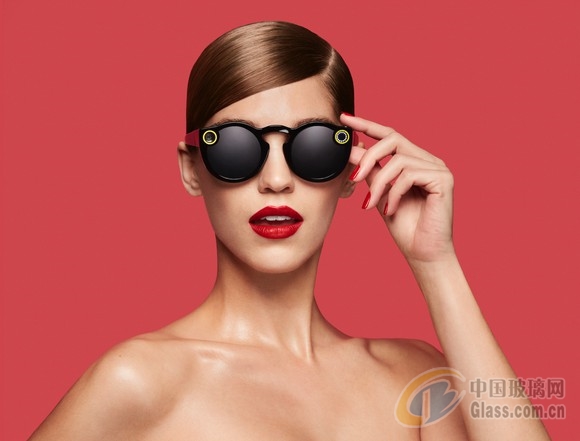Post Time:Jan 09,2017Classify:Industry NewsView:1138
Google made a lot of noise when it announced Google Glass at its developers conference in 2012. For its first demonstration, it had various extreme-sports athletes wear the head-mounted device while on a live Google Hangout video chat with Google co-founder Sergey Brin, and it had the tech world buzzing with anticipation. But within two years of launching the product, Google shut down Glass.

Conversely, Snapchat parent company Snap has used guerrilla marketing tactics to generate strong interest in its Spectacles -- a pair of sunglasses that double as a camera linked to Snapchat. The company randomly drops a giant vending machine in a city, and people line up for hours to get their hands on the $130 device. Others have spent well over the retail price to buy a secondhand pair online.
Snap has done what the Alphabet (NASDAQ:GOOG) (NASDAQ:GOOGL) company could not. It has made it cool to wear technology on your face. While Snap hasn't released any numbers about Spectacles sales, the above-retail pricing on eBay and lines at the vending machines indicates that they're popular.
But it's not just clever marketing that's made Spectacles a hit. It's their specificity, and that can tell us a lot about the rest of the wearables market, too.
Google Glass was a powerful device capable of doing a whole lot. The biggest problem it faced was that just because it could do something -- like provide weather data, set reminders, and dictate texts -- didn't mean people would want to use it for that. A regular smartphone worked just as well.
Google Glass lacked a specific purpose. Even Google's live demo at its announcement with the extreme-sports athletes could have been done better with GoPro cameras. Instead, Google provided a platform and asked developers to come up with a reason you'd want to wear Glass on your face all the time.
There's no question why you'd buy a pair of Spectacles. You want to share more photos and videos with Snapchat's 150 million daily users; that's all they do.
Spectacles are quicker and easier to use for recording short snaps, especially while performing actions requiring the use of both hands or when you want to capture unplanned events in the moment. Fishing your phone out and loading the Snapchat app can take a long time. Spectacles are also capable of capturing video in Snap's new circular video format, which mimics human perspective.
That specific, limited purpose allows Snap to sell them at an affordable price point. Spectacles cost just $130 compared to the $1,500 Google asked for a Glass unit.
The end result is a face wearable that feels more like a toy than the high-end technology of Google Glass. And that's a good thing. People buy toys somewhat impulsively, but they consider their options more carefully when buying a new computer, phone, television, or other piece of technology. As they should. Those things generally cost a lot more than toys.
This theory also apples to other types of wearables. Fitbit (NYSE:FIT) was once again the most popular wearable brand in 2016 and most of its wristbands are considered low-end fitness trackers. Its average sales price last quarter was $93. That's a price where consumers are willing to give the product a try and play around with it. It's a toy.
Comparatively, the Apple (NASDAQ:AAPL) Watch starts at $269, with prices climbing above $1,000. While the device is certainly more powerful than a Fitbit and has the potential to do a lot more, the best ideas Apple can come up with for uses are to track your fitness. In fact, its latest update focused specifically on new fitness-tracking functionality such as making it waterproof so it can track swimming activities.
Why would you buy an Apple Watch if all you need is a fitness tracker? Why would you buy Google Glass when all you want to do is share videos and photos with your friends? Making a device for a specific use is not only cheaper, it makes the marketing and messaging clearer for consumers. That's evidenced in the fact that fitness bands accounted for 85% of wearable sales last quarter, according to IDC.
That's the problem Apple currently faces with the Apple Watch. It can tout all of the technology it's stuffed inside that little wrist-worn device, but it can't give consumers a reason to buy it over one of its competitors.
There will surely be a market for Apple's high-end device simply because of its brand and strong design aesthetic. But until Apple can provide a differentiating function over its lower-end competitors, its sales will continue to lag Fitbit and other low-end device makers. That could be cellular connectivity, making the devices more independent. It could come from enterprise support. And Apple has done a good enough job getting the device onto the wrists of millions that there's relatively strong developer support. So, it could come from a third-party application.
Trump's potential $1.6 trillion investment
We aren't politicos here at The Motley Fool. But we know a great investing opportunity when we see one.
Our analysts spotted what could be a $1.6 trillion opportunity lurking in Donald Trump's infrastructure plans. And given this team's superb track record (more than doubling the market over the past decade*), you don't want to miss what they found.
They've picked 11 stocks poised to profit from Trump's first 100 days as president. History has shown that getting in early on a good idea can often pay big bucks – so don't miss out on this moment.
Source: www.yahoo.comAuthor: shangyi
PrevReason on Why Auto Glass Easily Break
Price of Shahe Nuodong Changcheng Float Glass on January 9th, 2017Next